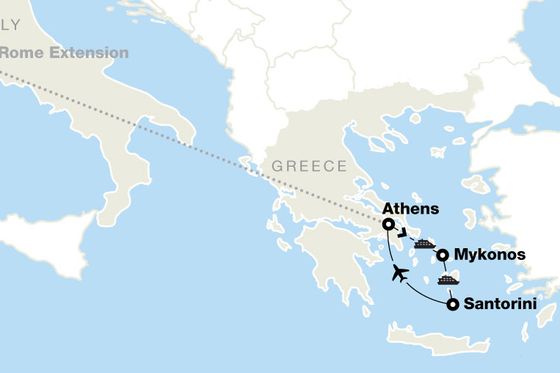Currency exchange for a trip to Europe
When gearing up for an international trip, especially for our exciting Europe tours, one of the most important things to sort out ahead of time is currency exchange. While credit and debit cards are widely used these days, you’re going to need cash for the odd expense, whether that’s to buy a scoop of gelato or to give someone a tip. Figuring out currency exchange is a part of travel that can seem daunting at first, but you only need to keep in mind a few things to simplify the process. Questions like “where to get euros while traveling?” and “which Euro currency do I need?” are part of preparing for a trip to Europe, and with the following tips you’ll be able to tackle them with confidence. Here’s our ultimate guide to currency exchange in Europe that will make your next tour with us easier than ever.

How many European currencies are there?
The first thing you should sort out when preparing money for your Europe tour is where you’re going and the European currency you’re going to need. Europe is vast; according to the United Nations, there are 44 countries in Europe, and nearly 30 different currencies are used across the continent. The most common is the euro, which is the official currency for 20 countries, including Italy, Croatia, and Greece. But if you’re taking a multi-country trip, like our best-selling London, Paris & Rome tour, you’re going to need both euros and pounds, the latter of which is the currency for the United Kingdom. And if you’re on our Highlights of Scandinavia: Sweden, Norway & Denmark tour, remember that, while these countries have all given their money similar names (krona in Swedish, and krone in Danish and Norwegian), these are unique European currencies. This means that you can’t use the Swedish krona in Norway, and you can’t use the Danish krone in Sweden.
Just like anywhere else in the world, if you intend to pay in cash, you need to do so in local currencies—though there are some exceptions. For more info on the currency needed during your trip, check out the “on-tour info” tab when perusing our tours to Europe.
Do you need to tell your bank you’re traveling?
These days, it’s no longer required to alert your bank that you’re traveling and will be using your credit and debit cards during your trip, but it doesn’t hurt. Notifying your bank about your travel plans can help avoid payment and withdrawal disruptions during your trip. A bank can also help if you want to buy euros and other currencies ahead of time. But in our experience, exchange rates can often be unfavorable when you do it in your home country. You’re better off using an ATM to withdraw cash as soon as you land. Airports all over the world are packed with ATM stations.

Where can I exchange dollars for euros, and how often should I withdraw money during my trip to Europe?
ATMs and banks can be found all over Europe. And we advise that you use them to get your euros rather than exchanging cash or purchasing them from a bank ahead of a trip. (Like purchasing euros from a bank at home, currency exchange kiosks don’t typically offer the best rates, and many charge a commission. Unless it’s an emergency, try to avoid exchanging currency when traveling.) So, make sure you have your debit card handy. Usually, an international airport will have plenty of ATMs in both the departure and arrival halls. If you can spot an ATM from a global financial brand (say, HSBC), withdraw there; those will likely have the best rates and the lowest withdrawal fees.
Speaking of fees, the more often you withdraw money, the more of those fees you’ll have to pay. We suggest making as few withdrawals as is possible—only once if you can manage it, though we know not all travelers feel comfortable carrying large sums of cash. Also, don’t be shy with using your credit and debit cards when making purchases. Most shops, cafes, and restaurants accept major credit brands. And if you have digital payment methods (like Apple Pay) on your phone, you can just tap and go.
How much money should I withdraw?
This is strictly a personal decision. Withdraw what you think you need and how much cash you feel comfortable carrying. Here are two things to remember: Unless you know you have another trip to Europe coming up soon, you may not want to have a lot of leftover European currency at the end of the tour. If you try to sell euros (or Norwegian kroner or British pounds) for dollars at the airport on your way home, you will likely lose up to 10% of their value in the exchange. Also, and this is especially notable when it comes to euros and pounds, coins can have higher values in Europe. (There are two-euro coins!) But most exchange kiosks won’t accept them if you want to sell them back for dollars. So, make sure you use your coins during your trip.

Find out what your bank and credit card company charge for international transactions.
While you don’t normally incur surcharges for using your credit and debit cards to withdraw money or make every purchase at home, many banks charge a fee when you use their debit or credit cards abroad. So, double check what your banks’ international withdrawal and transaction fees are. Some banks charge a flat rate, while others use a percentage system. This is why we advise that you only withdraw money once or twice during a trip. International ATM use often come with some of the heftiest fees, as you have to pay both the local bank and the one you use at home. If you withdraw euros in every city you visit on our 15-day Grand Tour of Italy, for example, those banking fees will add up. If you’d prefer no charges at all, do some research, as some banks don’t charge international transaction fees.
Remember that exchange rates are in constant flux.
When planning to exchange dollars to euros, don’t forget that the exchange rate is not going to be the same every day. The rate may be slightly different on day two of the A Week in Greece: Athens, Mykonos & Santorini tour as it would be on day seven. These numbers are based on a multitude of factors determined by the supply and demand of the currencies in question. Unless there’s a major financial disruption, however, these variations are minimal. You can easily find out what the day’s exchange rate is by doing a simple Google search—or by downloading the Go Ahead app.


)


































































































